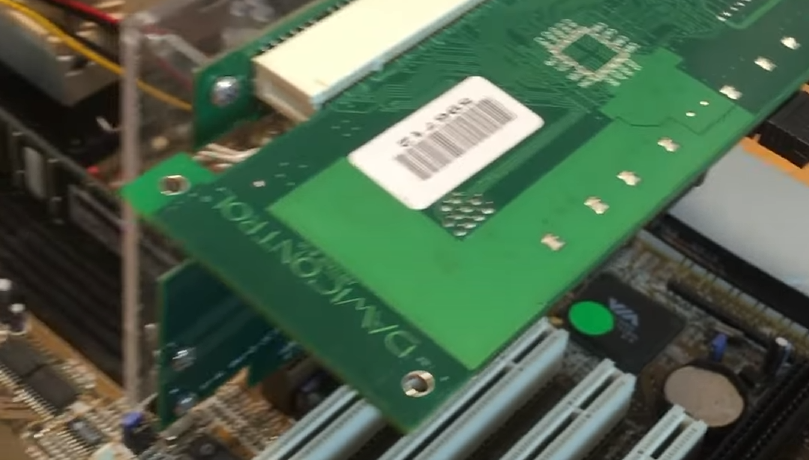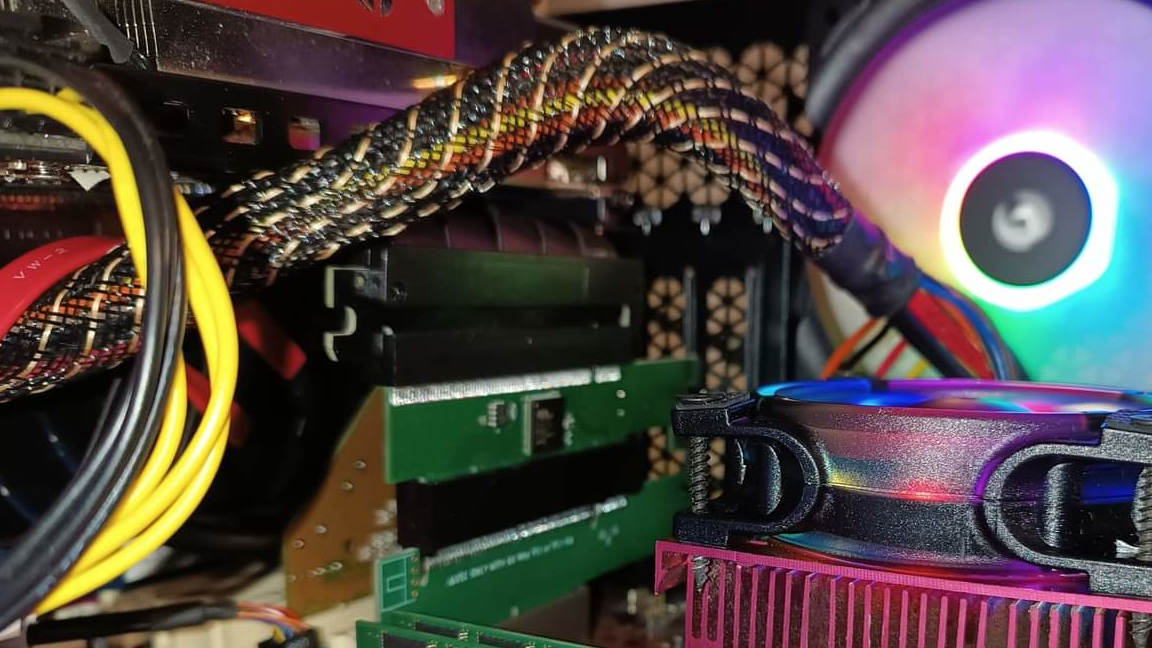Strangely enough, the past few months of 2024 have seen prominent discussions of a few modern-day AGP (Accelerated Graphics Port) mods — the first is a mod of questionable practicality to get a GTX 960 working on an AGP board, which took considerable gymnastics. The second involves repurposing an AGP port on a Super Socket 7 motherboard for faster, more modern networking speeds.
Tercio_mirandarecently posted a mod from a retro PC gaming community on Facebook. The process (pictured below) involved using both an AGP-to-PCI and a PCI-to-PCIe adapter to install a GTX 960 onto an ancient motherboard.

The AGP interface is newer and, thus, likely faster than the PCI interface on the motherboard, so using the first adapter is highly questionable; however, the user probably didn’t have a PCI to PCIe adaptor handy. The GPU is ultimately listed in an included AIDA64 screenshot, showing that it is functional. The user didn’t share performance benchmarks, but this setup may be enough for Crysis.
For instance, back in August of 2009, Don Woligroski,writing forTom’s Hardware, used an OC’d CPU and a powerful native AGP cardto get Crysis running at 65 FPSon Low Physics on an AGP board originally released in November 2005. PCIe debuted in 2003, so this was well after many faster boards with newer standards were already on the market. This means that, yes, AGP could run Crysis while it was still common, and it remained one of the most demanding games on PC for several years after its 2007 release.

Peoplestill test games with itthese days, thoughCrysis: Remasteredand its ray tracingare definitely the more intensive choice for modern, non-AGP graphics cards.
YouTuber RECNAS also has a minute-long YouTube video that highlights his Super Socket 7 motherboard and, subsequently, an AGP-to-PCI networking adapter. Since RECNAS wanted to repurpose this roughly late 90s-era Super Socket 7 motherboard as aNAS, he didn’t want to be relegated to the slower, shared PCI bandwidth on the board.

This means that if he could get the NAS running through the fastest available port on the board, AGP, he could achieve the speed he’s looking for. We’ve embedded the original video of him achieving this below.
Get Tom’s Hardware’s best news and in-depth reviews, straight to your inbox.

After testing with the AGP-to-PCI adapter, he’s achieved just over 200 MB/s throughput on his Super Socket 7 Board. The exact reading averages 198 Mebibytes per second, which converts to roughly 207 MB/s. This is compared to the reported shared PCI bandwidth of 133 MB/s, or more realistically, 92 MB/s, according to RECNAS.
Now, the maximum rate of the original AGP port is 533 MB/s, and AGP 3.5 eventually phased out at 2133 MB/s— but as the name implies, these ports were targeted at graphics expansions, not storage. The later stage of AGP graphics support could get pretty interesting, though, especially if you were willing tooverclock your AGP-supported motherboard.
As you can see, the modding community is still hard at work wringing more functionality out of old gear, either for entertainment or out of necessity.
Christopher Harper has been a successful freelance tech writer specializing in PC hardware and gaming since 2015, and ghostwrote for various B2B clients in High School before that. Outside of work, Christopher is best known to friends and rivals as an active competitive player in various eSports (particularly fighting games and arena shooters) and a purveyor of music ranging from Jimi Hendrix to Killer Mike to the Sonic Adventure 2 soundtrack.